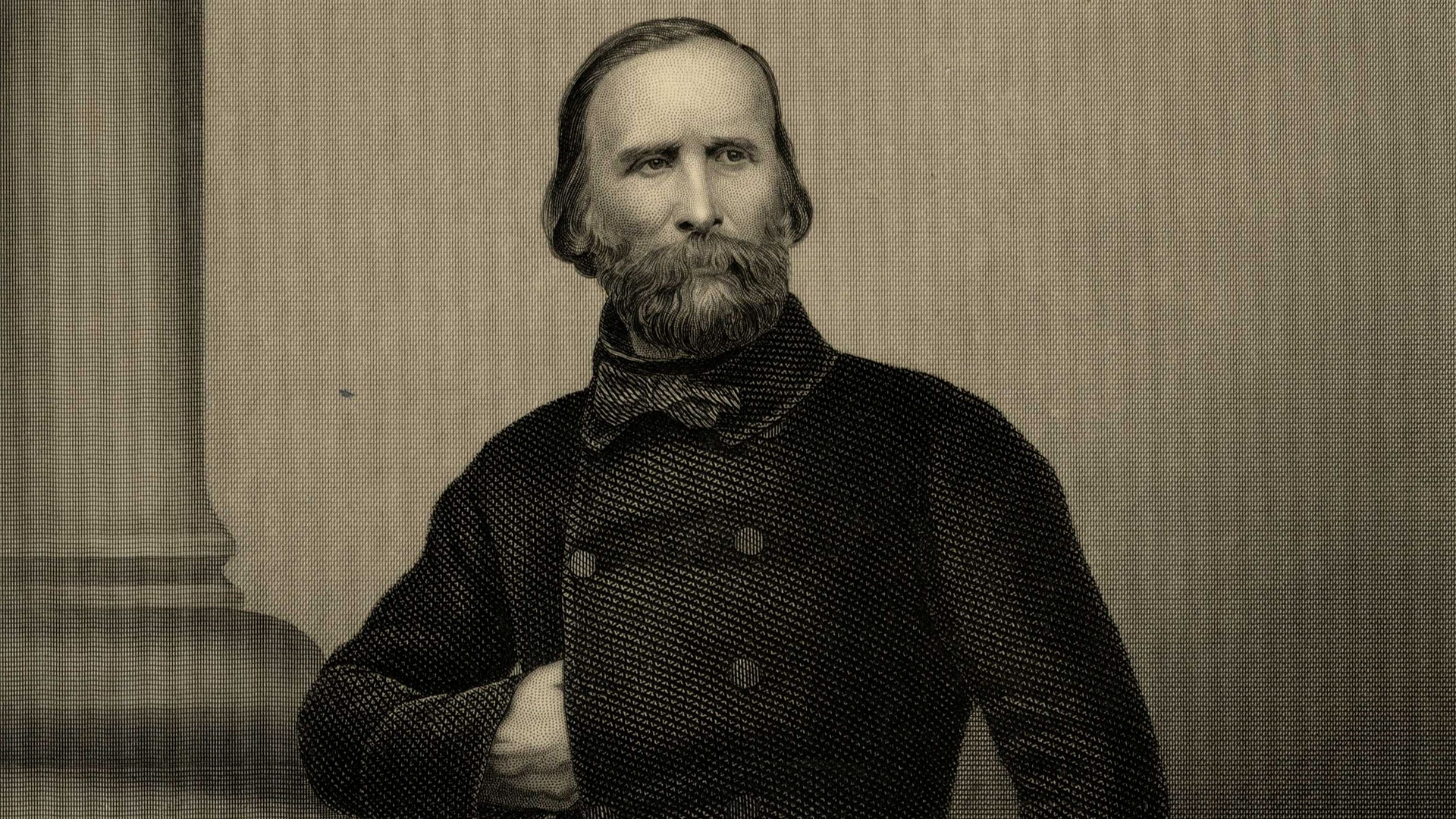Giuseppe Garibaldi was an Italian patriot and soldier of the Risorgimento, (meaning rebirth,) the movement for Italian freedom and unification in the 19th century. He was a Republican who, through his conquest of Sicily and Naples with a legion of guerillas, helped Italy achieve unification under the royal house of Savoy.
Born into a family of fishermen and coastal traders in Nice, France on July 4, 1807, Garibaldi spent his early life as a sailor and merchant captain. In 1833, he served in the navy of the Kingdom of Piedmont-Sardinia, where he met Giuseppe Mazzini, a journalist, politician, and activist who spearheaded the Italian unification movement. In 1834, Garibaldi took part in a failed mutiny with the aim of provoking a republican revolution in Piedmont, which forced him to escape to France. He was accused, tried, and sentenced to death in absentia by a Geonese court.

Garibaldi, forced to escape and live in exile, became a martyr in the cause of freedom and unification. A year later, he joined Giovane Italia (Young Italy), a revolutionary organization founded by Mazzini, and shortly after he left for South America. Over the next 12 years, Garibaldi lived between Brazil and Uruguay, throwing himself into Republican civil wars and fights for independence.
In 1848, he returned home to Italy, where, sharpened with the guerilla tactics he had learned during his exile in South America, helped lead the fight for Italian unification alongside Mazzini and Count Camillo Cavour. Cavour was considered the brains behind the unification, Mazzini the soul, and Garibaldi the sword. Garibaldi’s military prowess across South America and particularly during the Risorgimento in Italy, earned him hero status, where he was pronounced as the “hero of two worlds.”

His fame spread across the world: he was welcomed in London in 1864 with what was the largest crowd ever seen in the British capital at the time, was (unsuccessfully) sought after by Abraham Lincoln to participate in the battle against slavery as well as by Polish nationals fighting for independence. Even his memoirs were translated into 11 languages.
Garibaldi died in Caprera, Italy on June 2, 1882, at the age of 74. Over the course of Italian history, his image has been revered and used for various political contexts. He adorned the banner of those who pushed for Italy’s intervention in World War I, was a symbol for fascists advocating for a military dictatorship, and was a role model for the Socialists and Communists who vied for control of the government in 1948. Regardless of the context in which Garibaldi has been used over the decades, there is no denying the magnetic effect he’s had on Italian history.
Asia London Palomba
Asia London Palomba is a trilingual freelance journalist from Rome, Italy. In the past, her work on culture, travel, and history has been published in The Boston Globe, Atlas Obscura, The Christian Science Monitor, and Grub Street, New York Magazine's food section. In her free time, Asia enjoys traveling home to Italy to spend time with family and friends, drinking Hugo Spritzes, and making her nonna's homemade cavatelli.

